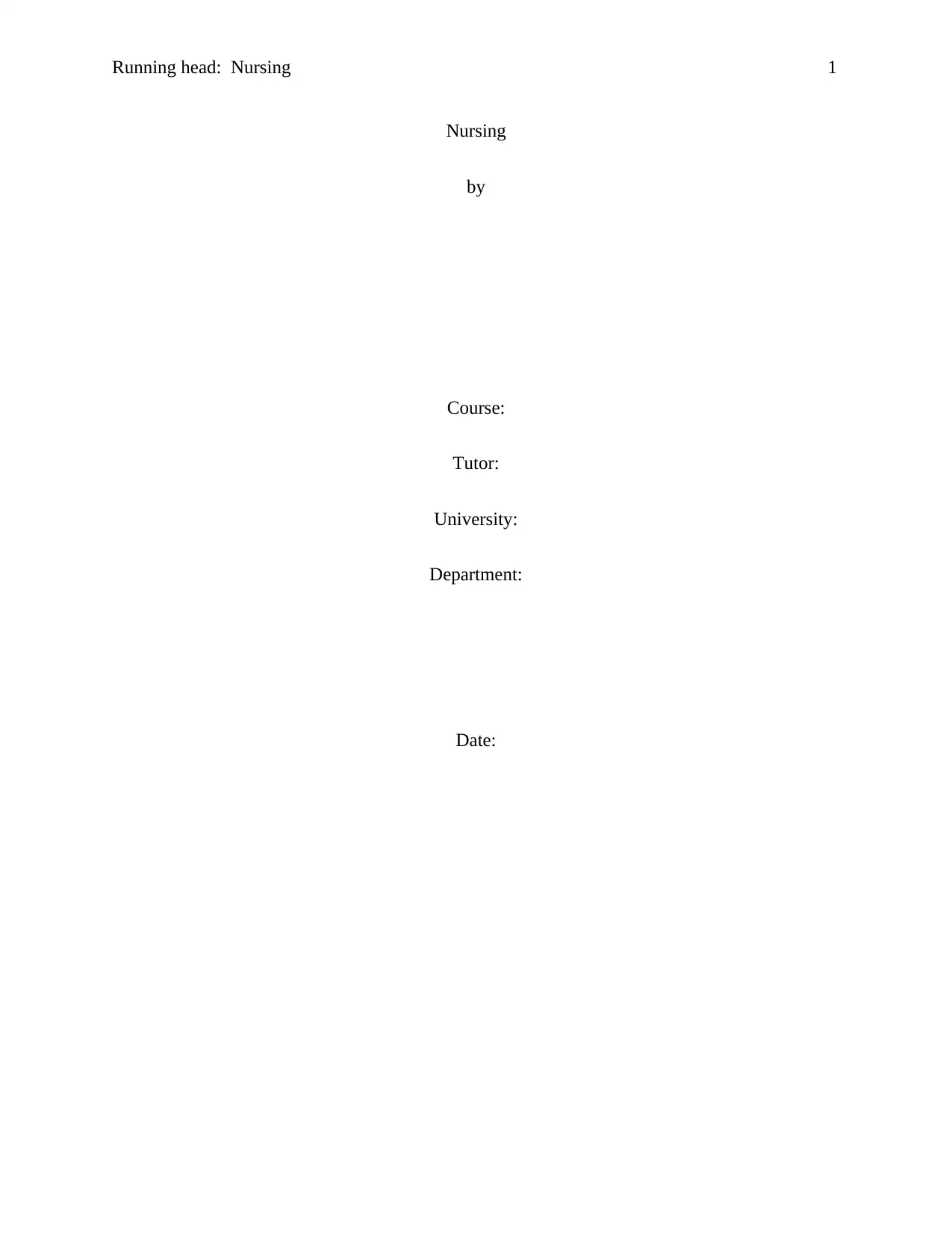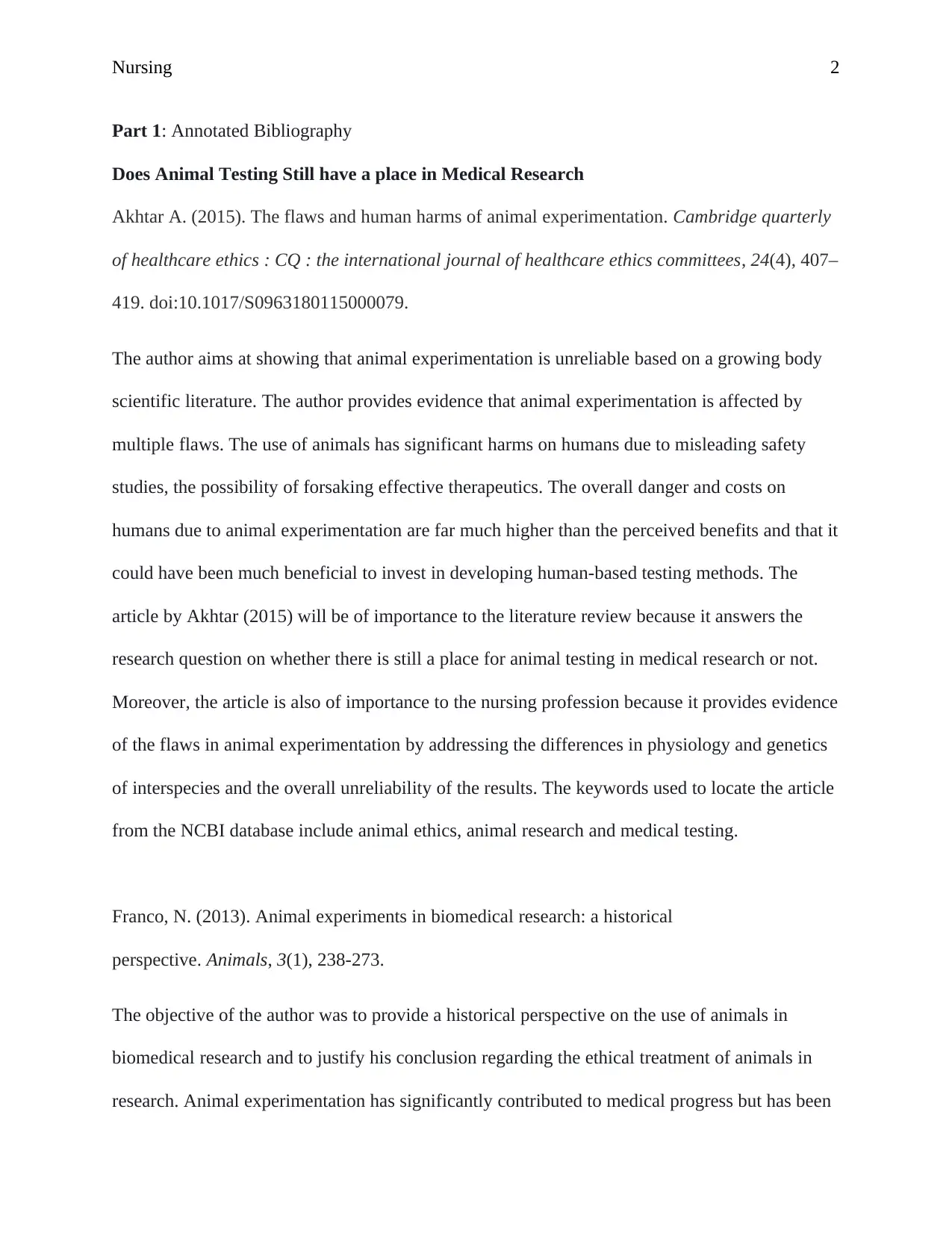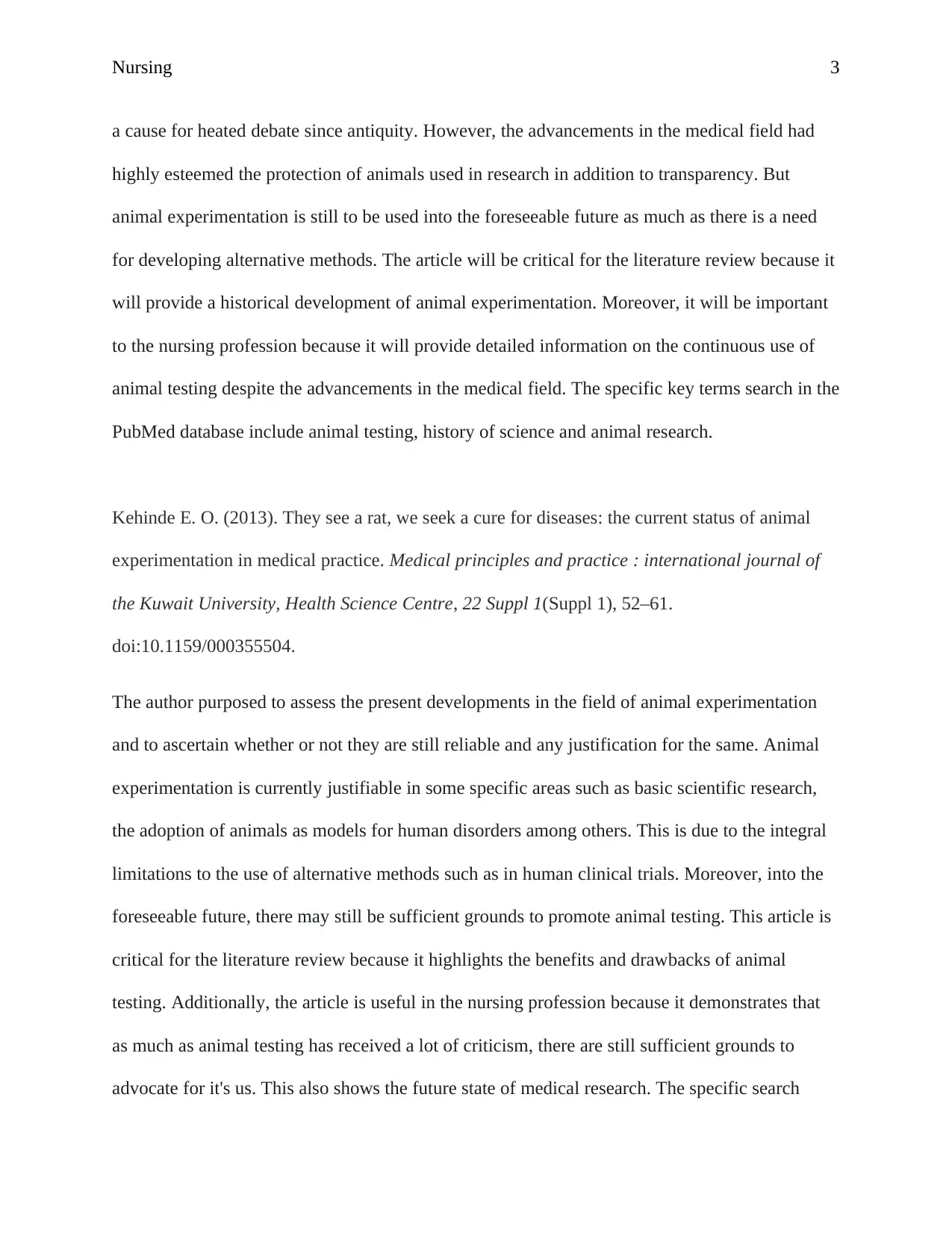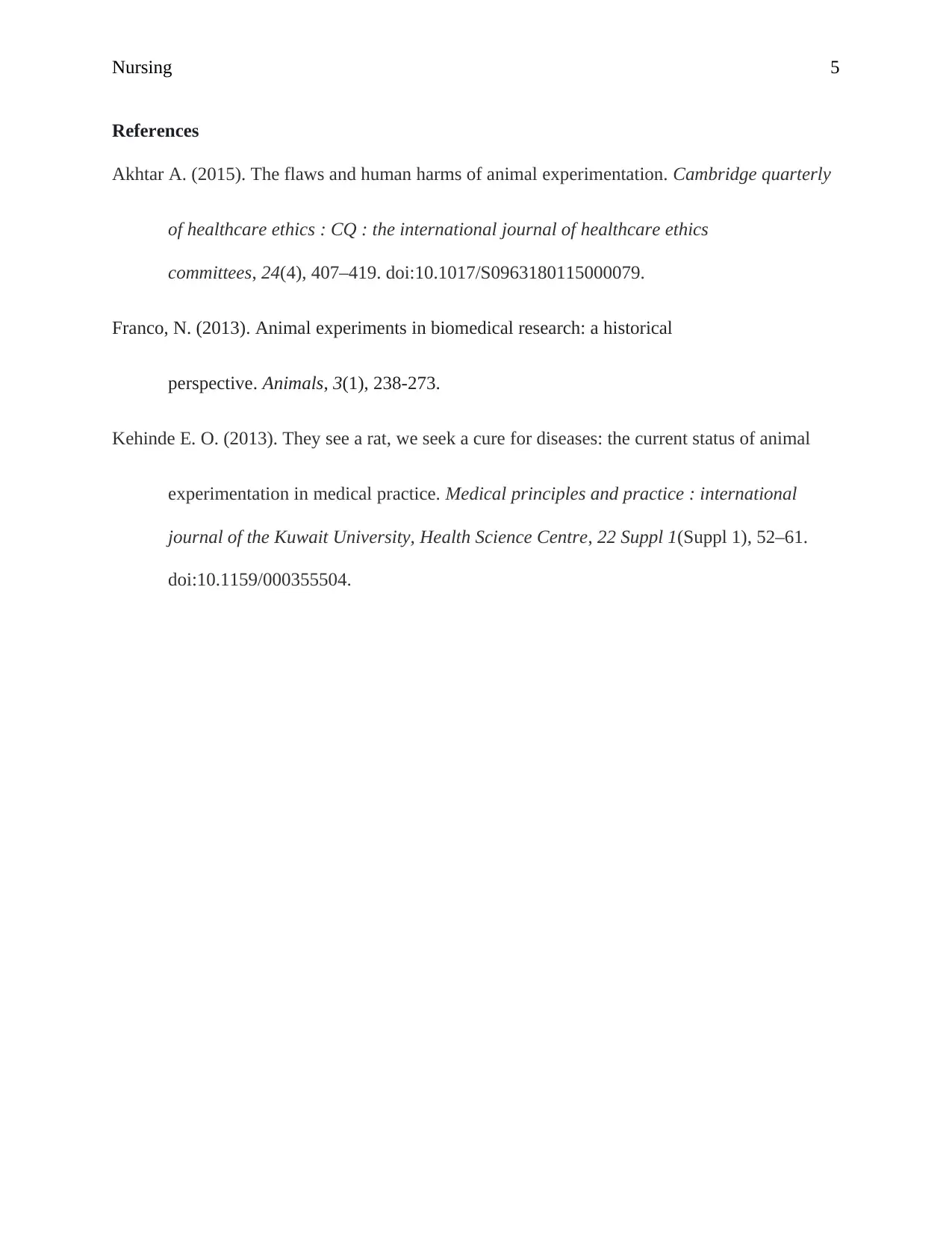University Nursing 2, Fall 2024: Animal Testing Annotated Bibliography
VerifiedAdded on 2022/10/01
|5
|826
|228
Annotated Bibliography
AI Summary
This annotated bibliography examines the ongoing debate surrounding the use of animal testing in medical research. It presents three key articles that explore different facets of this complex issue. Akhtar (2015) critiques animal experimentation, highlighting its flaws and potential harms to humans, arguing for a shift toward human-based testing methods. Franco (2013) provides a historical perspective on animal experimentation, tracing its contributions to medical progress while also acknowledging the ethical considerations involved. Kehinde (2013) assesses the current status of animal experimentation, weighing its benefits and drawbacks, and considering its continued relevance in specific areas of research, such as basic scientific research and modeling human disorders. Each entry includes a summary of the article's main points, its relevance to the research question, and its significance for the nursing profession, along with the keywords used for article retrieval.
1 out of 5











![[object Object]](/_next/static/media/star-bottom.7253800d.svg)